Ever wonder how pizzerias handle their orders so efficiently? Well, it’s because they prepare in bulk. Ratios are an important concept when it comes to baking.
Most restaurants prepare their dough in bulk. They use a “Baker’s Percent” to calculate, where everything is measured as a percentage of the flour.
The general rule is that 50 pounds are regarded as 100% of the weight. So 56% of an ingredient would mean 28 pounds of that item.
Don’t worry, it’s not as difficult as it sounds. We’ve brought you the easiest recipe for this.
- Difficulty Level: Hard
- Serving Size: 112-119 Pizzas
- Mixing Time: 10-12 minutes
- Resting/Fermenting Time: 45-90 minutes
- Total time:55-102 minutes
Nutritional Facts(Per 11 oz):
| Calories (Per dough ball) | 800 |
| Fat | 10g |
| Carbohydrate | 150g |
| Protein | 25g |
Ingredient List (50lbs)
- Flour 50 lb
- Sugar 12 oz (Optional)
- Salt 1 lb
- Water 28 lb
- Yeast 6 oz
- Oil 2 lb (Mixed oil- 90% Vegetable oil and 10% Olive oil)
Cookwares you’ll need
- Industrial Mixer
- Plastic Trays
- Weighing Scale
- Dough Docker
- Pizza Disk
- Dough Roller Sheet
Step-By-Step Direction for Making The Dough
Let get to mixing our dough then!
Step 1: Mix The Ingredients
Dump the 50-pound bag of flour into the bowl. Next, add 28-pound of water into the mixer along with one pound of salt.
Make sure the water is at optimum temperature before adding. Factors like Flour-Temperature, Water-Temperature and the heat caused by friction have a limit.
All of these should be around 60 degrees Fahrenheit.
Next, attach the agitator/hook of the mixer on and then lift the bowl up. Otherwise, the agitator won’t fit properly.
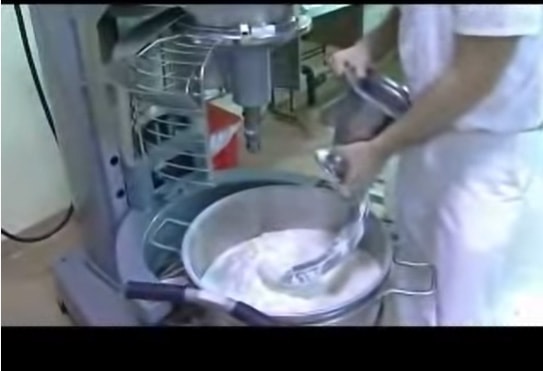
Next, turn on the mixer and prepare to add the oil. Use the ingredient shoot to add the oil into the mix.
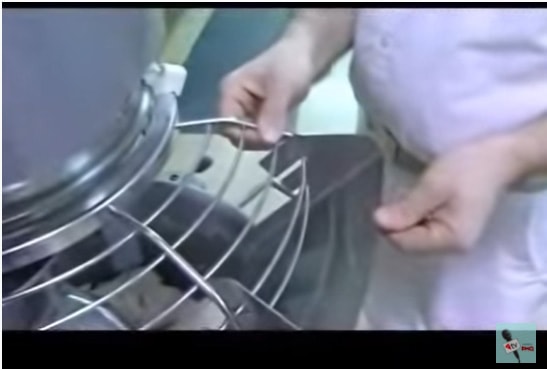
No dry flour should stick to the bottom by then. This process takes around 2 minutes, after which you should increase the stirrer speed.
Next, add the oil bit-by-bit by using the ingredient shoot. Make sure to keep the mixer’s speed at 2 otherwise it will wear out the machine.
Keep this going for about 6-10 minutes, until the dough is smooth. The way to check if its ready is to form a dough ball and tear it through the middle. If there is no visible tear-line at the center of the dough, it’s ready.
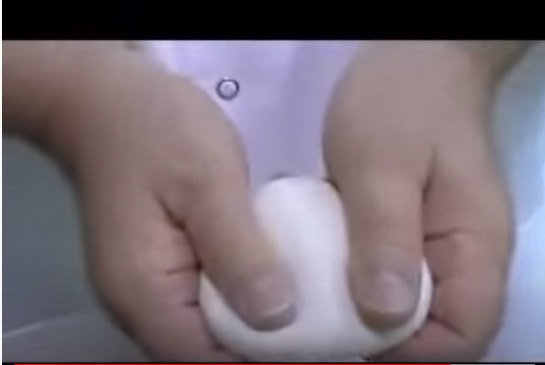
Step 2: Cutting and Rounding
After about 10-12 minutes of mixing, the dough’s temperature should measure between 80-85 degrees Fahrenheit.
Transfer the dough to the workbench and cut it into manageable strips. Use a weighing scale to measure out 11 oz pieces.

Make sure to flatten the dough and tuck in the rough edges. Next, use your hands to round up the dough properly.
Next, arrange a dozen of these balls on a tray and brush enough oil to coat them. This prevents it from sticking later on when it expands.
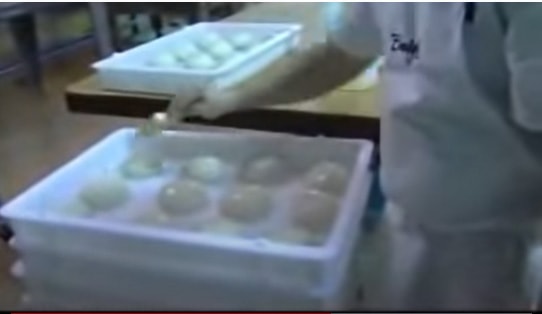
Now, transfer them into the fridge to rest and ferment. The fridge should not exceed 32 degrees Fahrenheit or the dough will freeze.
Step 3: Fermenting and Storing
Remember to cross-stack the trays and keep an empty tray as a lid. Cross-stacking allows proper aeration of the dough.
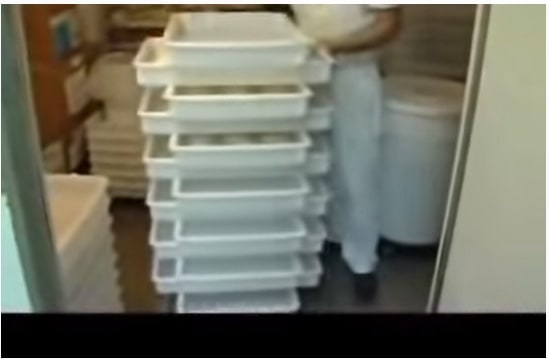
After 45-90 minutes of resting, stack the dough properly and use the empty tray to close the lid.
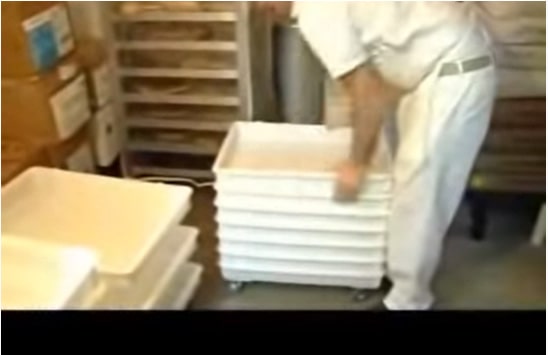
For better results, leave the dough overnight to allow more fermentation.
Step 4: Working The Dough
Now, take the rested ball of doughs and run them through the dough-sheeter machine. This helps to flatten the dough out and knead them.
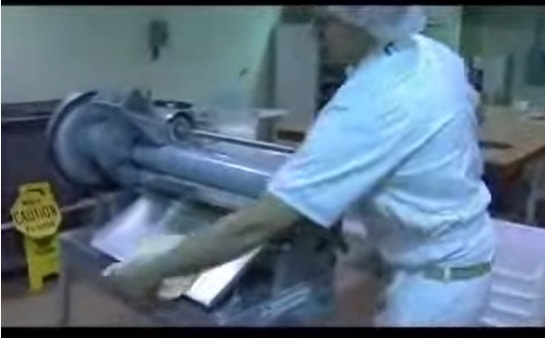
Next, the dough moves on to its last stage. Here, a person ensures the dough is a uniform size by comparing it with a disk. The dough is then stretched out by hand.
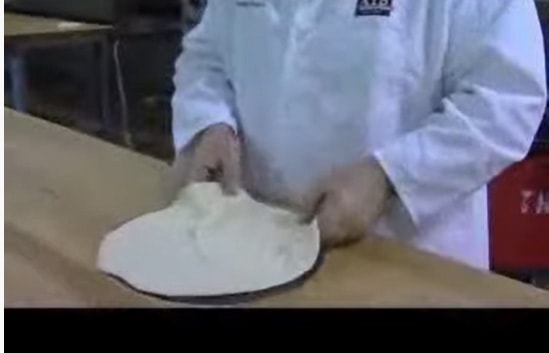
Afterward, the dough docker is run over the dough. This is to control the dough from blistering when it’s baked.
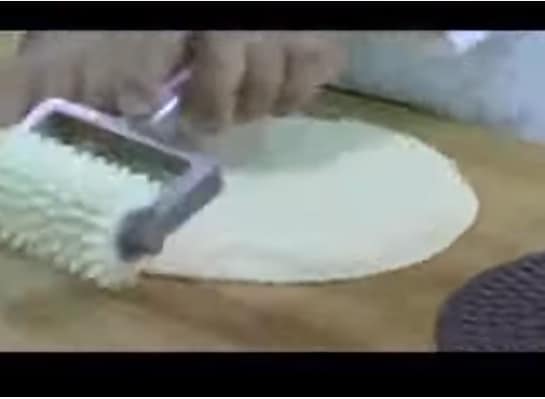
This is why pizzerias are so efficient at baning out orders. All these steps help to minimize errors and increase efficiency.
Following these steps ensures that you have a great product, day in and day out.
Some Important Tips-
If you follow our instructions, you will be able to carry out the recipe hassle-free. But in case you’re facing problems, check out these tips.
Why Is My Pizza Dough Not Getting Out Of The Mixer?
It’s probably because you did not add the oil around the edges of the bowl. The oil got incorporated into the dough hence its sticking to the bowl.
What Does Blistering Mean?
Bread blisters occur when CO2 slowly leaks from the dough’s surface when it ferments. It happens when it’s fermenting for a long time in the freezer.
Why Is Dough Getting Stuck On The Disk?
It’s because you ran the dough docker over the dough, while the disk was under it. Take the dough out on a flat surface then run the docker over it.
We hope you liked this recipe and try it out yourself. For your convenience, we tried keeping it as simple as possible.
- How Long Does Vegan Butter Last? Mystery Solved - January 9, 2024
- How Long Does Vegan Mayo Last - January 2, 2024
- From Pot to Plate: How Long Does Vegan Chili Last in The Fridge? - December 26, 2023

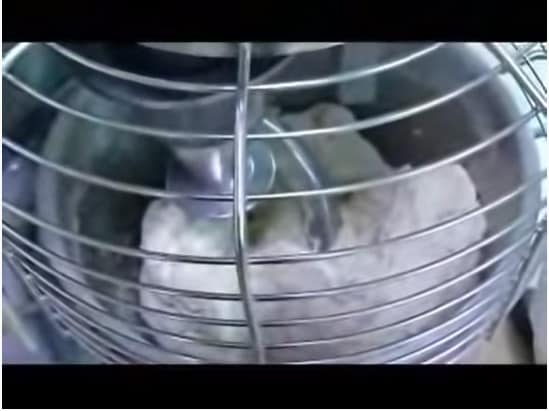
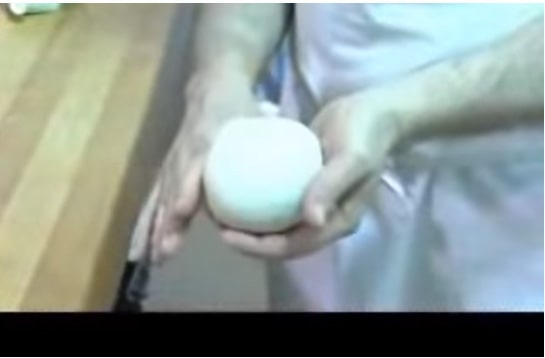





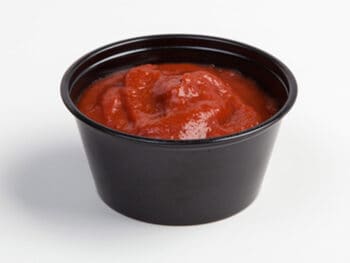

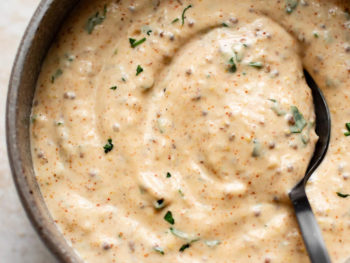
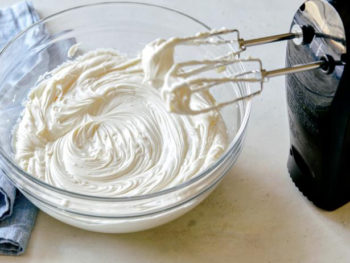

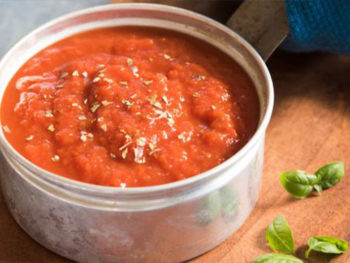

 BJ’s Pizza Recipe- Fastest Way Into Someone’s Heart
BJ’s Pizza Recipe- Fastest Way Into Someone’s Heart